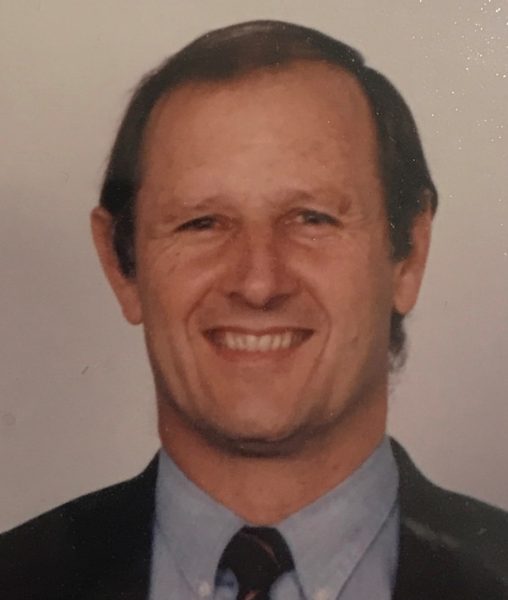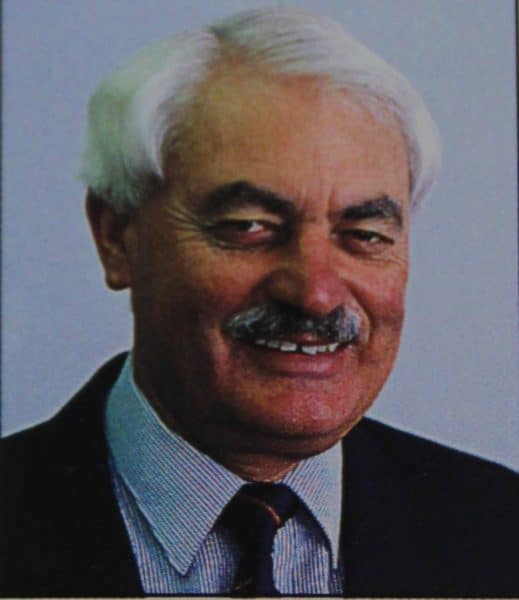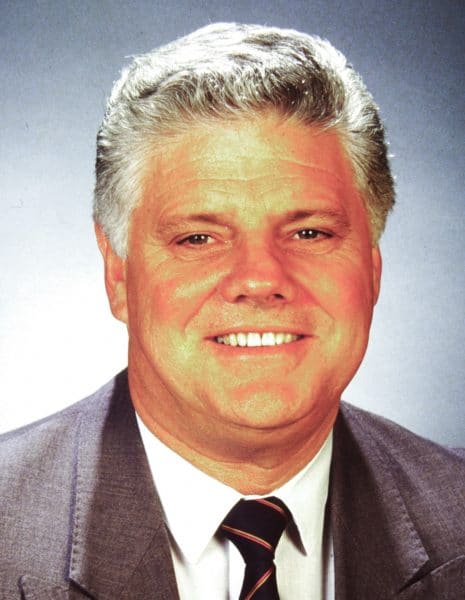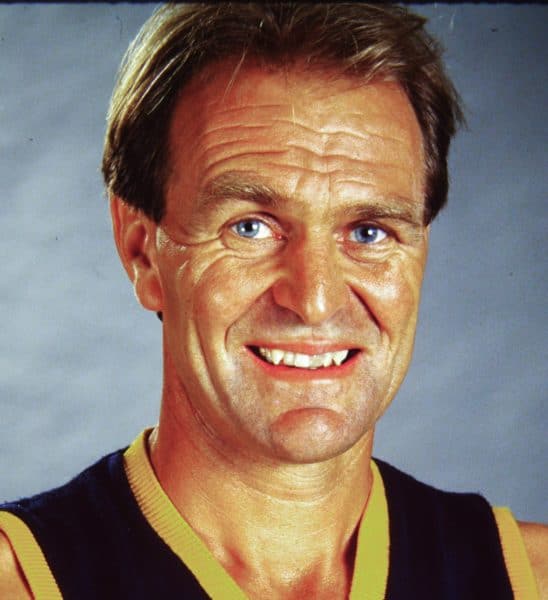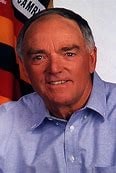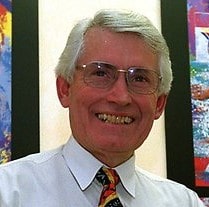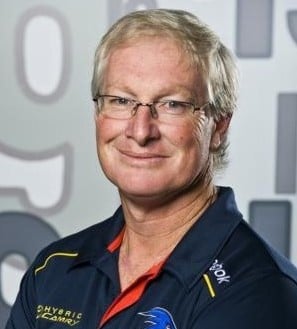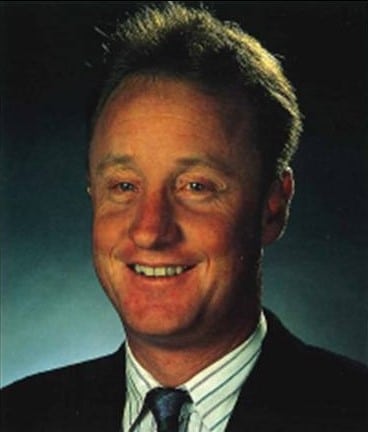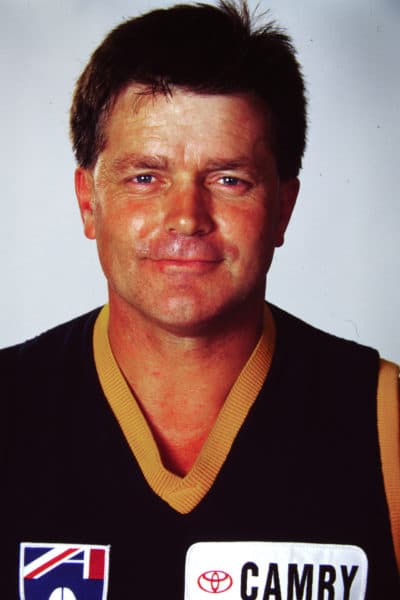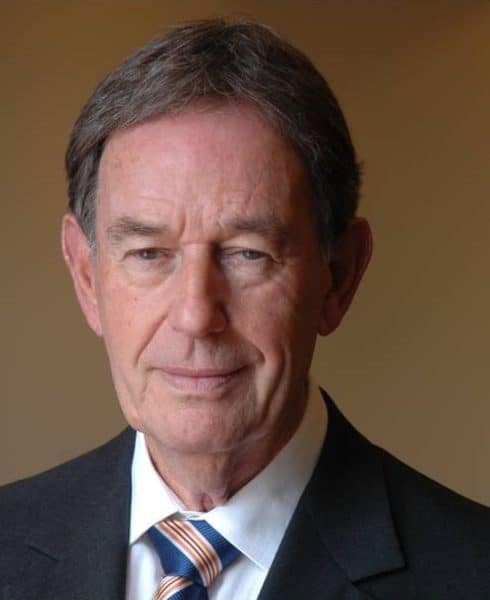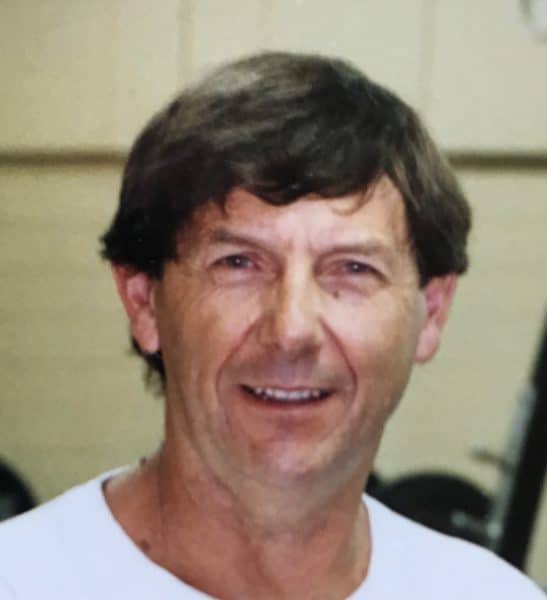Origin of the Crows
Natus Ad Magna Gerenda. Born to do great things. Adelaide’s early motto was a sign of a club ready to fly high from day one.
South Australian football, through the Adelaide Football Club, finally went national ahead of the 1991 season but only after the SANFL was forced to act earlier than intended, after a decade of debate.
It was far from an easy birth after the end of the 1990 SANFL season was overshadowed by three months of off-field turmoil that disrupted, divided and transformed football in the State.
In May 1990, the ten SANFL clubs unanimously resolved to stay united until the end of the 1992 season, agreeing on a list of terms and conditions for future entry negotiations with the AFL. Little had changed in the nine years since the SANFL first made an unsuccessful bid to join the Victorian Football League, after being invited to make a submission.
In late July, however, it was revealed that Port Adelaide had been in secret discussions with the AFL and reached a heads of agreement to enter the competition in 1991.
In the following days and then weeks the football war escalated. SANFL officials met AFL clubs, the SANFL made a counter-proposal to field a composite side in the AFL from 1992, and Glenelg launched the first of a number of legal challenges and succeeded in gaining a temporary Supreme Court order preventing Port from negotiating with the AFL.
The AFL wanted to award the licence to a company independent of the SANFL but once SANFL president Max Basheer offered to immediately pay $1 million of the licence fee, the AFL started to listen. Then, on September 19, the AFL clubs voted 13-1 for the AFL Commission to finalise negotiations with the SANFL to hold the AFL licence.
Port, which won the 1990 SANFL premiership on October 7, remained hopeful its bid would succeed if the SANFL and AFL failed to agree on the entry conditions. Negotiations were tense but eventually the Head Licence agreement was signed in Melbourne on October 10 and five days later the Adelaide Football Club’s Interim Board met for the first time.
There was so much work to do. The new club needed a coach, to secure players to start training in late October and make key staff appointments. Club colours, guernsey design and emblems, administration facilities and a gymnasium were a priority, support staff had to be found, finances and agreements negotiated, player contracts signed, all on top of numerous administrative matters including insurance, marketing, membership and sponsorship.
There had been an Adelaide Football Club formed 130 years earlier, in 1860, when it was the first football team in South Australia. But the origins of the current Club can be traced back to June 1981, when a special meeting of the SANFL’s League Directors voted unanimously to support an application for the inclusion of an SANFL team into the VFL from 1982.
Guidelines were set in the proposal and the bid highlighted that:
- The team be corporately owned and managed by the SANFL.
- It be known as the Adelaide Football Club.
- It be a composite team of players selected from the member clubs of the SANFL.
- Football Park be its home ground, and it establish playing, training and administrative headquarters at that venue.
But the VFL did not approve the application and although discussions took place spasmodically in following years, the VFL and SANFL remained distant on some of the conditions, including licence fees.
On May 21 1986, the SANFL formed a company, Adelaide Football Club Incorporated, with all issued shares owned by the league. The stalemate continued, however, even after expansion clubs from Western Australia and Queensland (West Coast and Brisbane Bears) joined the VFL in 1987. There also was strong public sentiment against joining a national competition, with concerns about the impact on the SANFL competition.
Fast forward to 1990 and the SANFL continued to resist before it was suddenly stuck in a bitter fight with one of its own clubs and then under pressure from the AFL to agree to some conditions it had wanted to avoid, including a $4 million licence fee.
But once the Head Licence agreement was signed in October, immediate action was required to build a club and team ready to play as a team in three months.
The Interim Board, appointed by the SANFL directors, was chaired by SANFL president Max Basheer. It consisted of Bob Hammond – a successful businessman with a long record of outstanding football service as a player, coach and president- SANFL general manager Leigh Whicker and SANFL vice-president Bob Lee; Glenelg official and managing director of Rowe and Jarman sports stores, Ed Betro; North Adelaide board member Adrian Sutter and experienced chartered accountant Rick Allert.
It first met on October 15 and took responsibility for setting the club’s structure, negotiating agreements, launching the club and all planning and activity associated with early operations of the club. SANFL staff including Murray Tippett, John Lyons and solicitor John Ferguson provided support and were involved with the various committees.
Only three days after this meeting, Graham Cornes was told he would be the new club’s first coach. Cornes, who played 385 senior games in South Australia, coached South Adelaide in 1983-84 and then led Glenelg to premierships in 1985 and 1986. He also enhanced his reputation by guiding SA to three State-of-Origin wins over Victoria from 1986-88. Port Adelaide and former Collingwood coach John Cahill had also been interviewed. Former Norwood and Collingwood champion Michael Taylor was appointed assistant coach, not long after he was Leigh Matthews’ assistant in Collingwood’s 1990 premiership season.
Other football appointments included SA football great Neil Kerley as football manager, fitness coach Trevor Jaques (from Glenelg), one of Australia’s most experienced sports physicians Dr Brian Sando (from Norwood), Port Adelaide’s Des Thomas (head trainer), Barrie Downs (team manager) from West Adelaide, Rex Leahy (property steward) from Glenelg; and strength coach Leon Holme.
Woodville chairman Bill Sanders left the State Bank – where he had been a branch manager – after nearly 32 years of service to be the new club’s first general manager. Other early starters included finance controller (and former West Torrens player) Grant Rutherford and marketing manager Mark Colley.
First office staff included Di Bean, Maria Ballestrin, Ann Pilkington and Samantha Richards.
Timekeeper Wally Smith, boot steward Ron Quigley, doorkeeper Bob Marshall and statisticians Bob Shoolbread, Don Bailey, Alan Trewartha and Don McGlashan were other football appointments and former Carlton champion Geoff Southby was engaged as a Melbourne-based advisor.
Planning for the club colours started and at the first meeting there was a slight preference for blue, green and white. But only nine days later the focus had switched to the State colours of blue, red and gold and a hooped guernsey (and socks). One popular emblem choice – the Sharks – was unavailable due to copyright. The Giants, Falcons and Rams were also considered and when the Rams was knocked back by the AFL, the Board chose the Crows.
After final AFL approvals, the Adelaide Football Club revealed its name and look on November 28. Interestingly, a popular Australian play written by Alan Hopgood in 1963, And the Big Men Fly, was about a fictional team called the Crows.

Simon Tregenza models the Adelaide guernsey.
An initial 57-man training squad was named with representatives from all ten SANFL teams from the 1990 season. There were some changes made in the first few weeks of training as the club moved to sign extra players, including former South Australians at VFL clubs. Bruce Lindner was the first recruit to agree to return, followed by 1982 Magarey Medallist Tony McGuinness, Danny Hughes and Mark Mickan. The final 52-player squad was named in March.
By Christmas the players had access to a new gymnasium and locker rooms built under the Members’ Grandstand at Football Park. In late November the first staff moved into a second-hand transportable building in the car park at the south-western end of the ground.
The Crows also found a major sponsor by Christmas, with the Toyota Motor Corporation agreeing to a three-year proposal. The sponsorship was confirmed publicly at the end of January.
There was still scepticism and some key SA football figures predicted the new Club would lose the SANFL millions of dollars.
Ticket and membership sales were sluggish in the first weeks. Although a high percentage of Football Park Members added the Crows games to their package, only 887 home match ticket memberships were sold by December 18. Fortunately, the exciting success of the opening trial game against Essendon, when a full house packed Football Park, helped build hype.
Hammond – who in February became the first chairman of the Adelaide Football Club – believed this trial game success was significant for a new club searching for credibility and hoping SA football fans would embrace the new side.
The Interim Board agreed and signed the sub-licence agreement between SANFL and AFC at its meeting on February 13. One of the key conditions was that the AFC would pay 80 per cent of its profits to the SANFL in addition to annual installments of $400,000 from 1992.
Budgets were difficult to forecast but revenue of about $4.5 million was expected in the first year, with outgoings including player transfers, establishment costs and SANFL distribution expected to leave the club with a small loss.
At the SANFL’s AGM on February 25, directors of the league elected the first permanent board of the Adelaide Football Club.
Hammond was named chairman, interim Board members Whicker, Sutter, Allert and Lee continued and they were joined by Central District administrators Robert Zerella and Rex Chidley, and former Glenelg president Bob Campbell.
After the Essendon trial, Adelaide won its first Fosters Cup pre-season game against Geelong by 77 points, then lost a trial game away to West Coast, had a win at the MCG against St Kilda but lost to North Melbourne by 58 points in the Foster’s Cup semi-final at AFL Park (Waverley).
The inaugural 52-man squad was finalised two weeks before the first match, with Chris McDermott named captain and McGuinness vice-captain.
Finding a theme song for the new team was a regular item on the Board’s agenda list but the first recording (played at the opening trial game) was abandoned and then Toyota’s marketing team quickly created “Here we go, here we go, Camry Crows”.
Soon it was time for the Adelaide Football Club’s first official game for premiership points, against powerful Hawthorn at Football Park on March 22 – only 158 days after the interim board first met.


